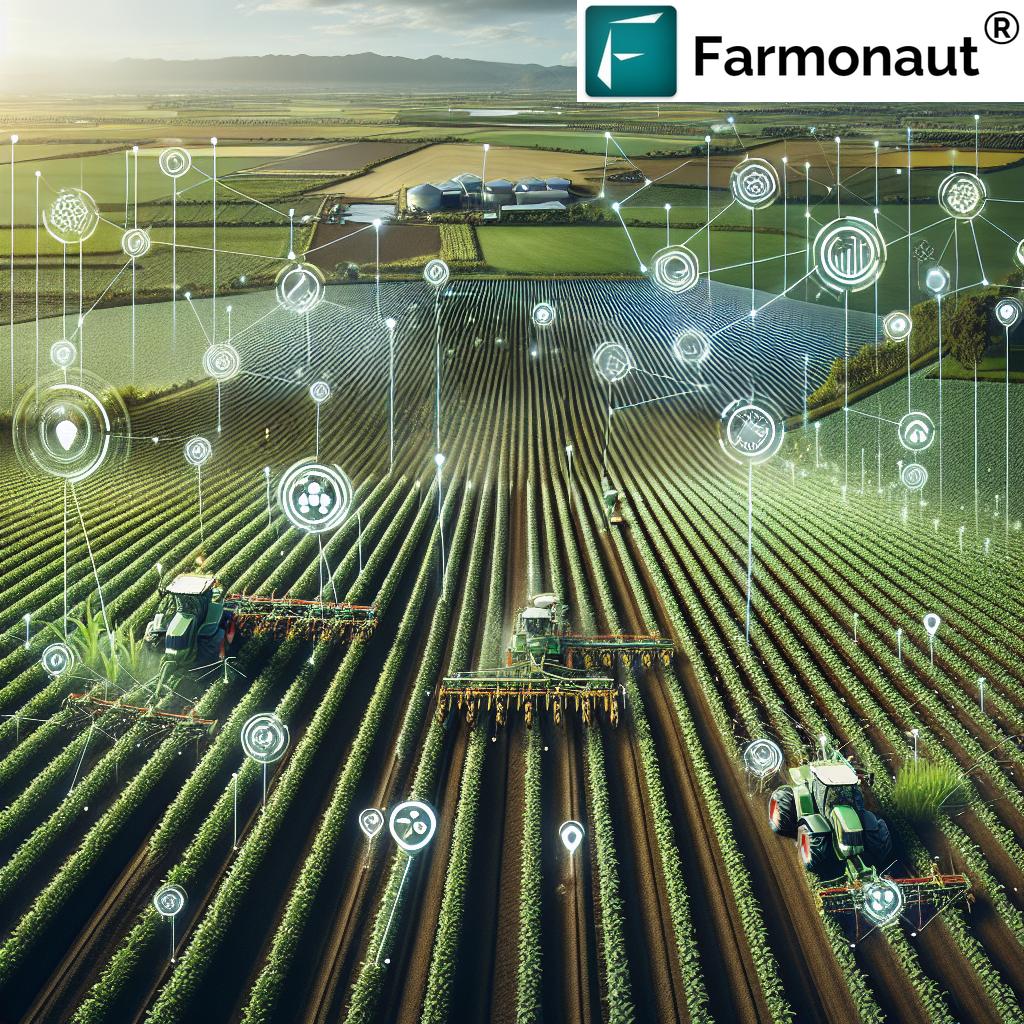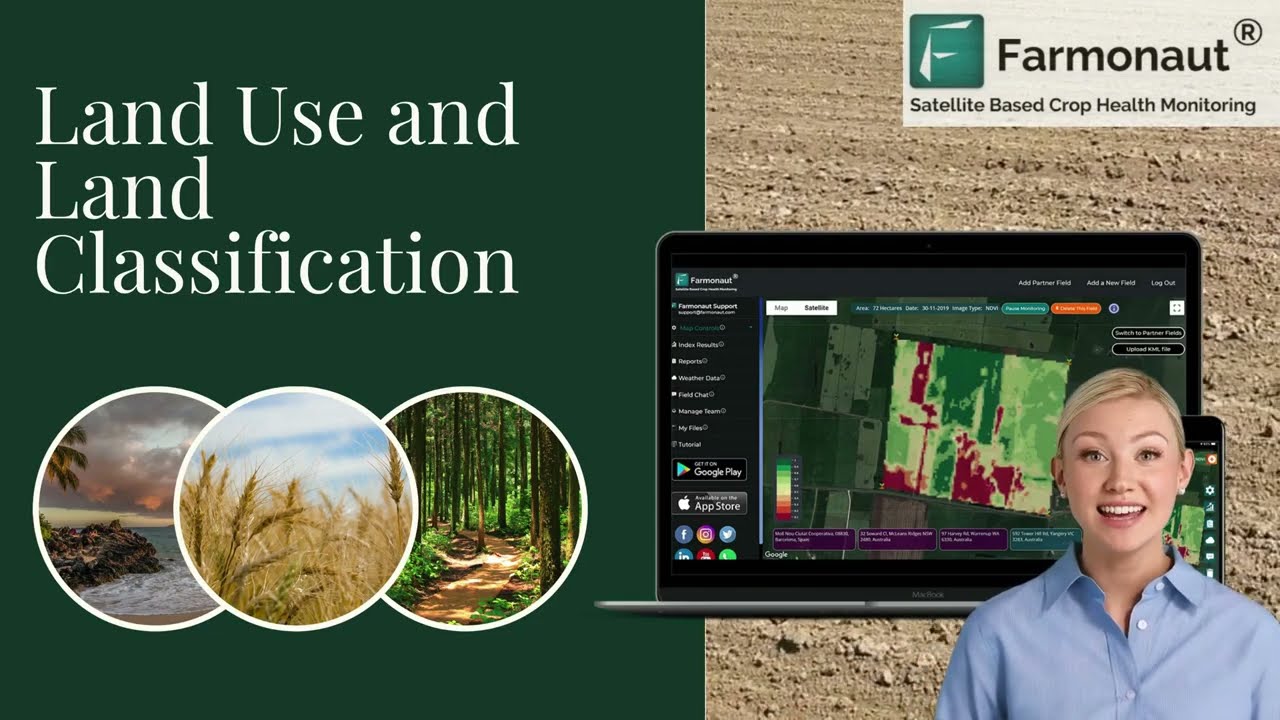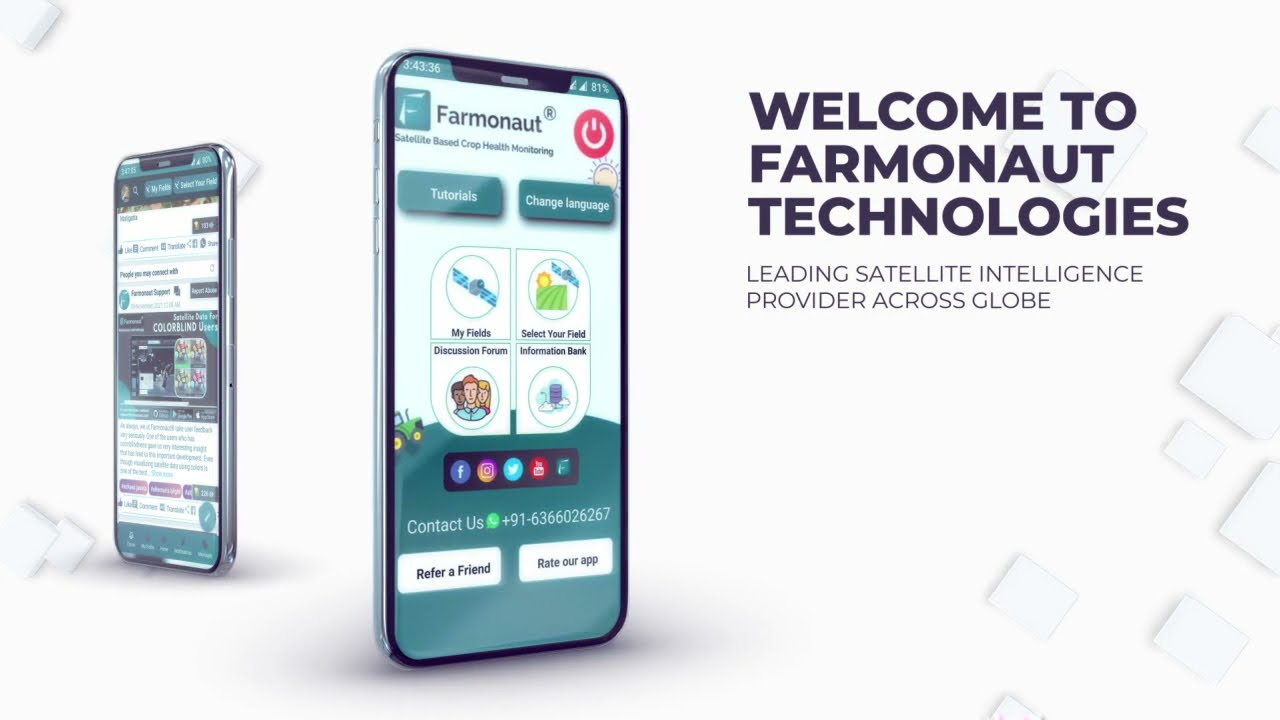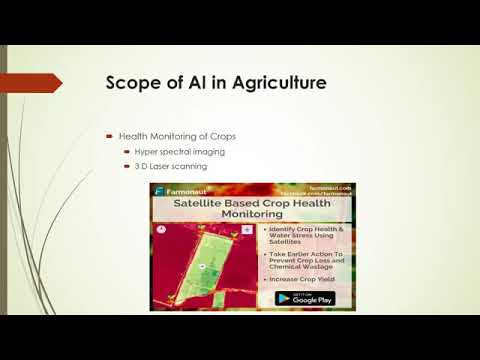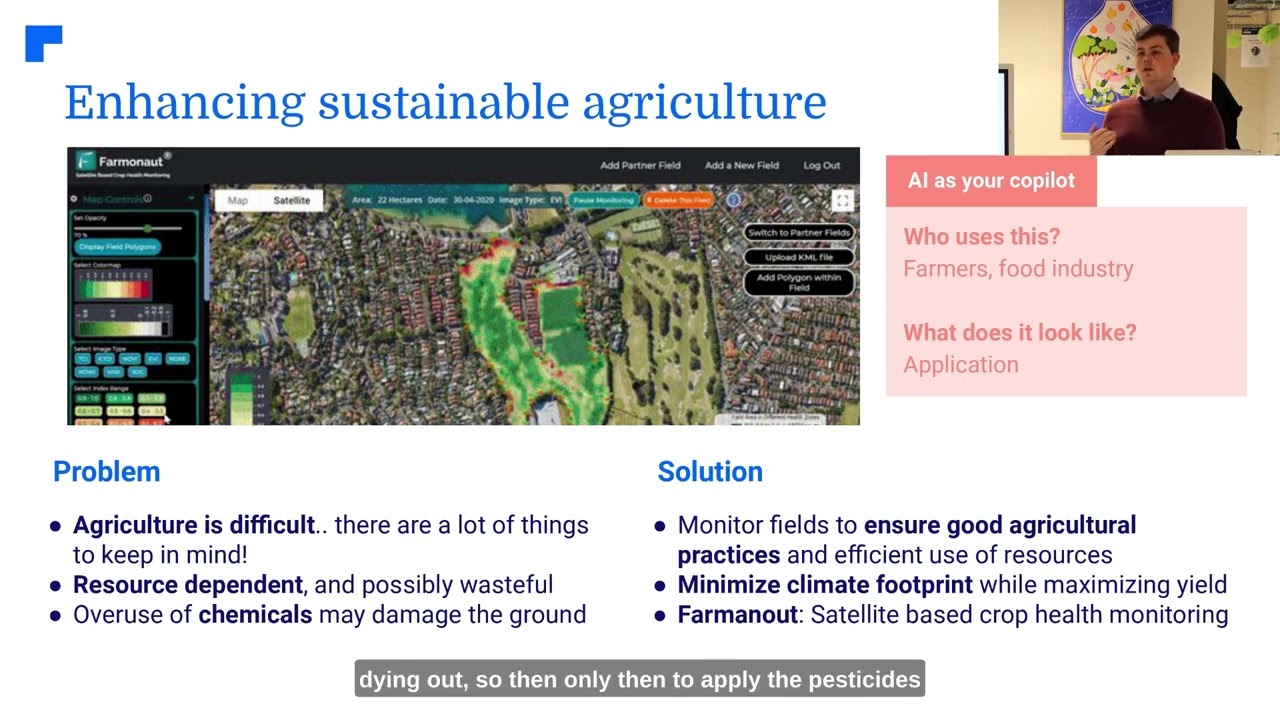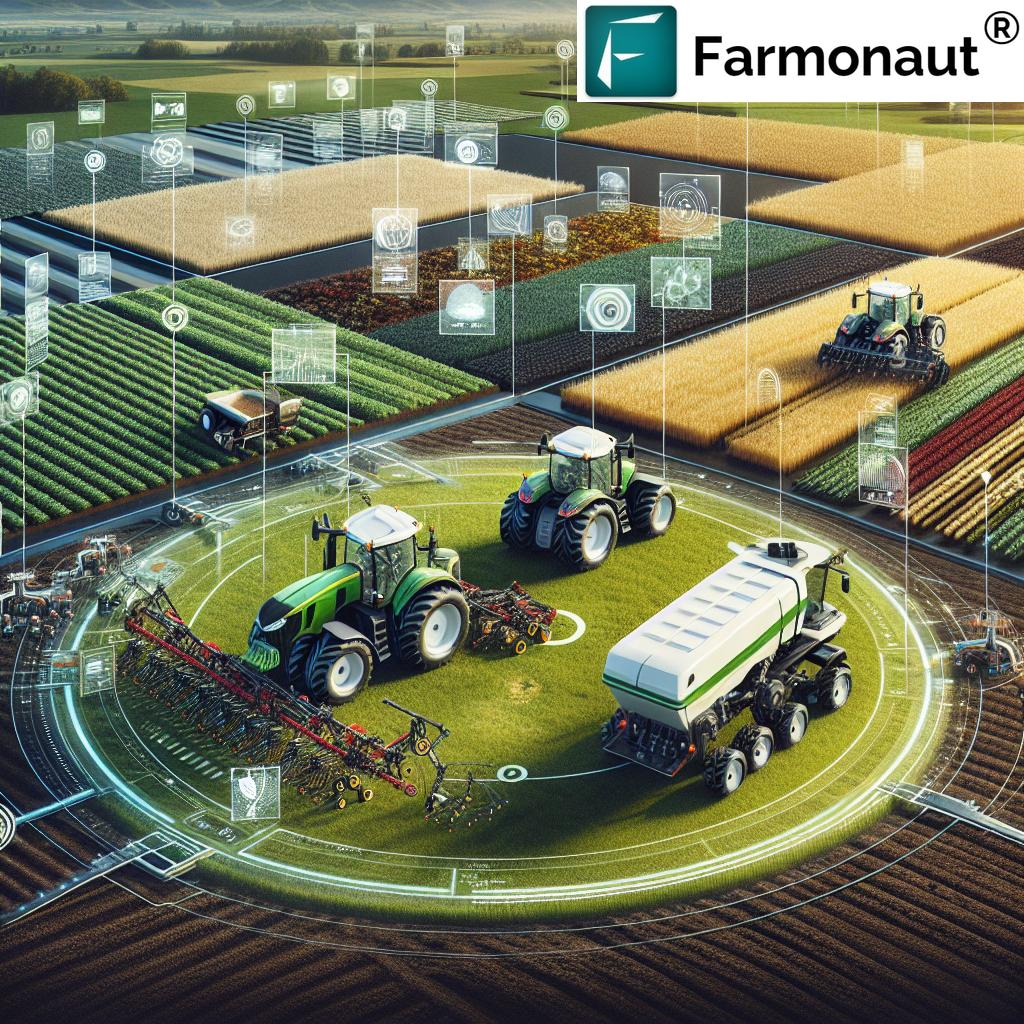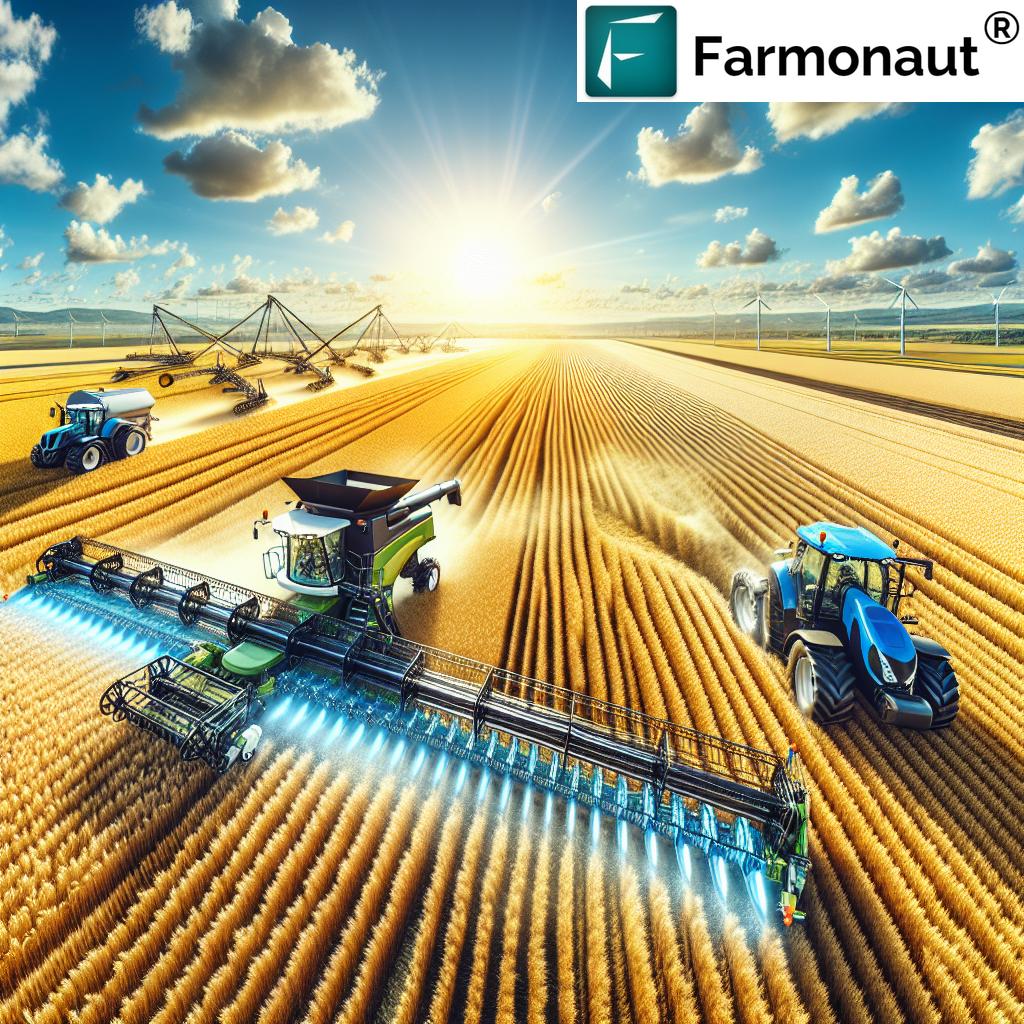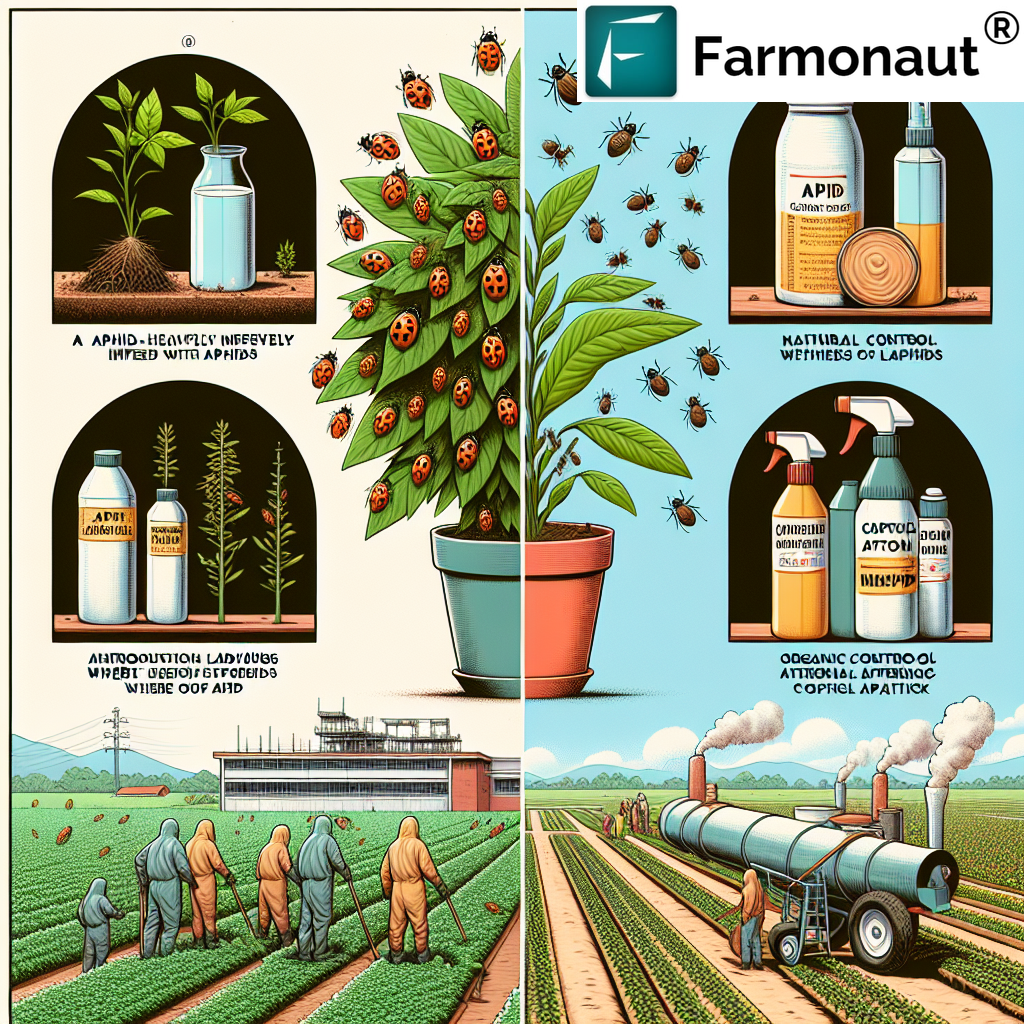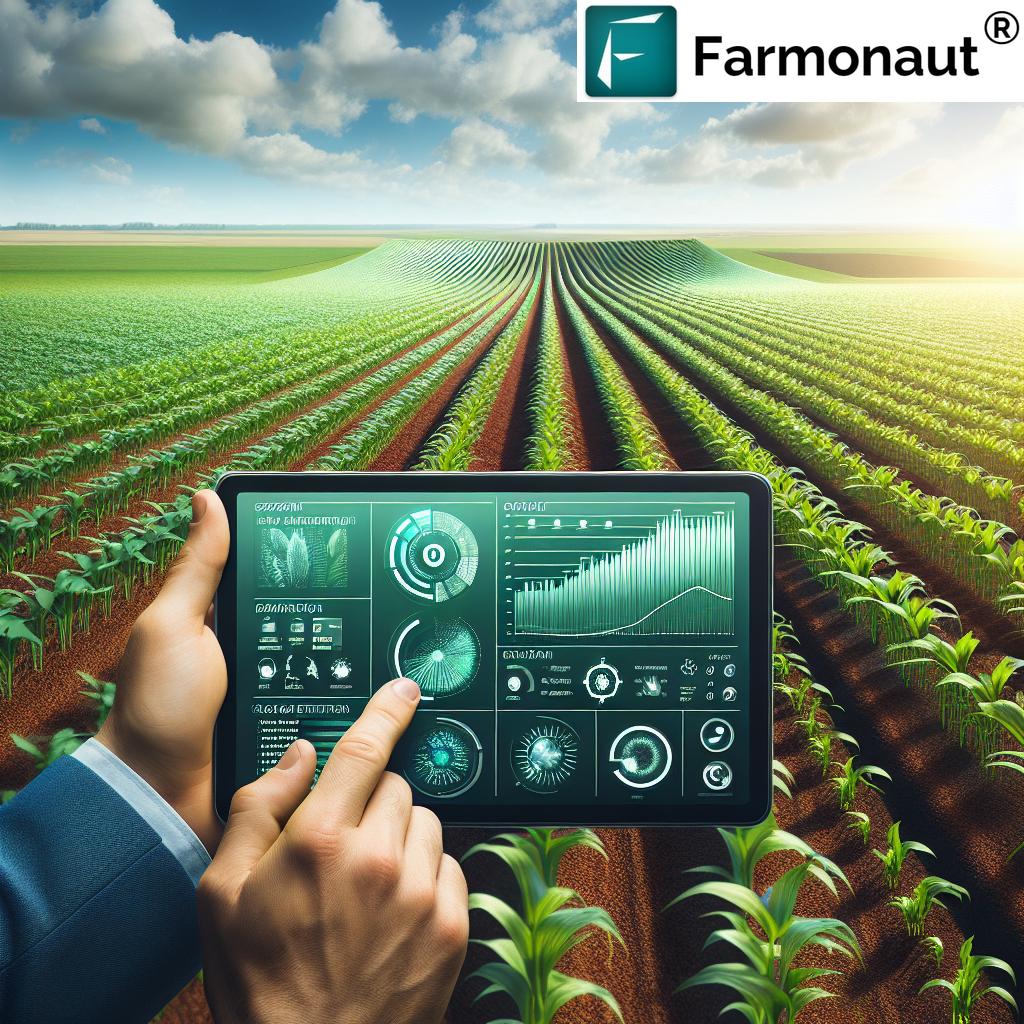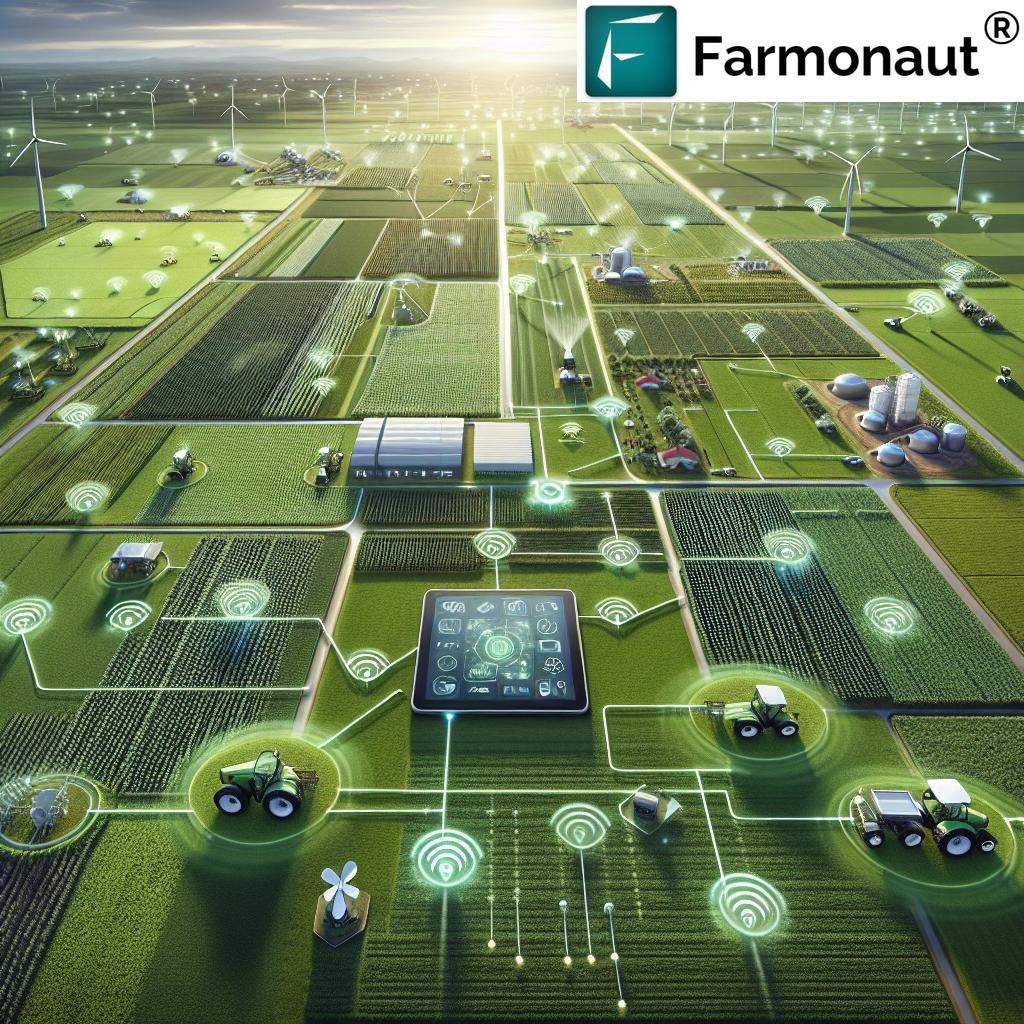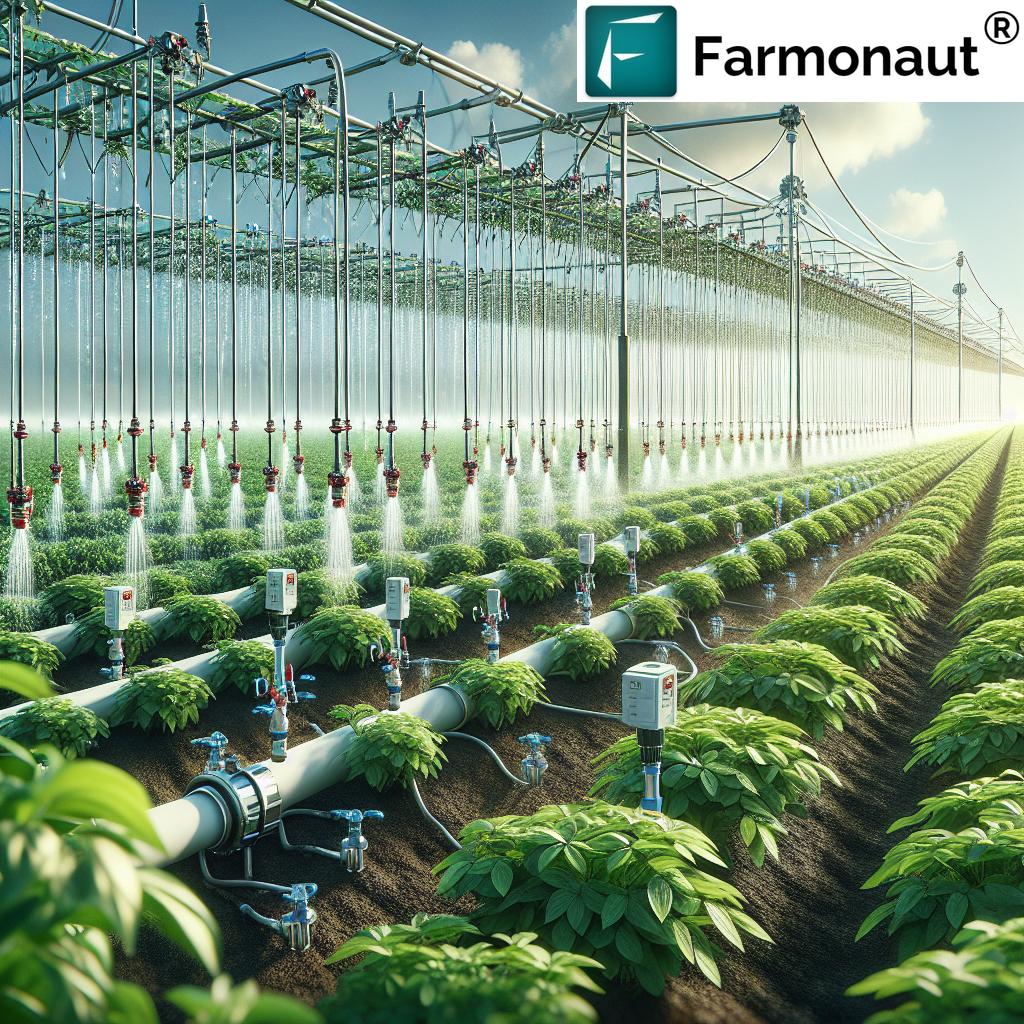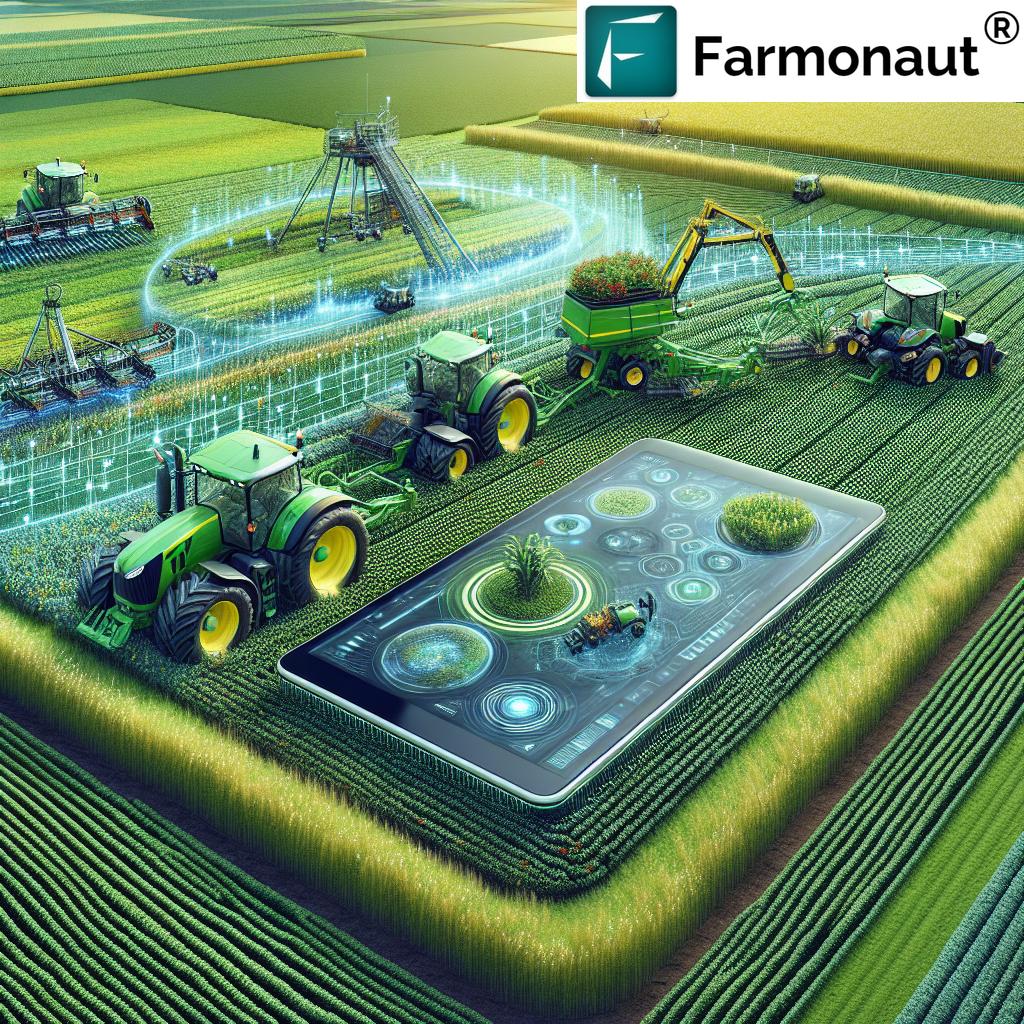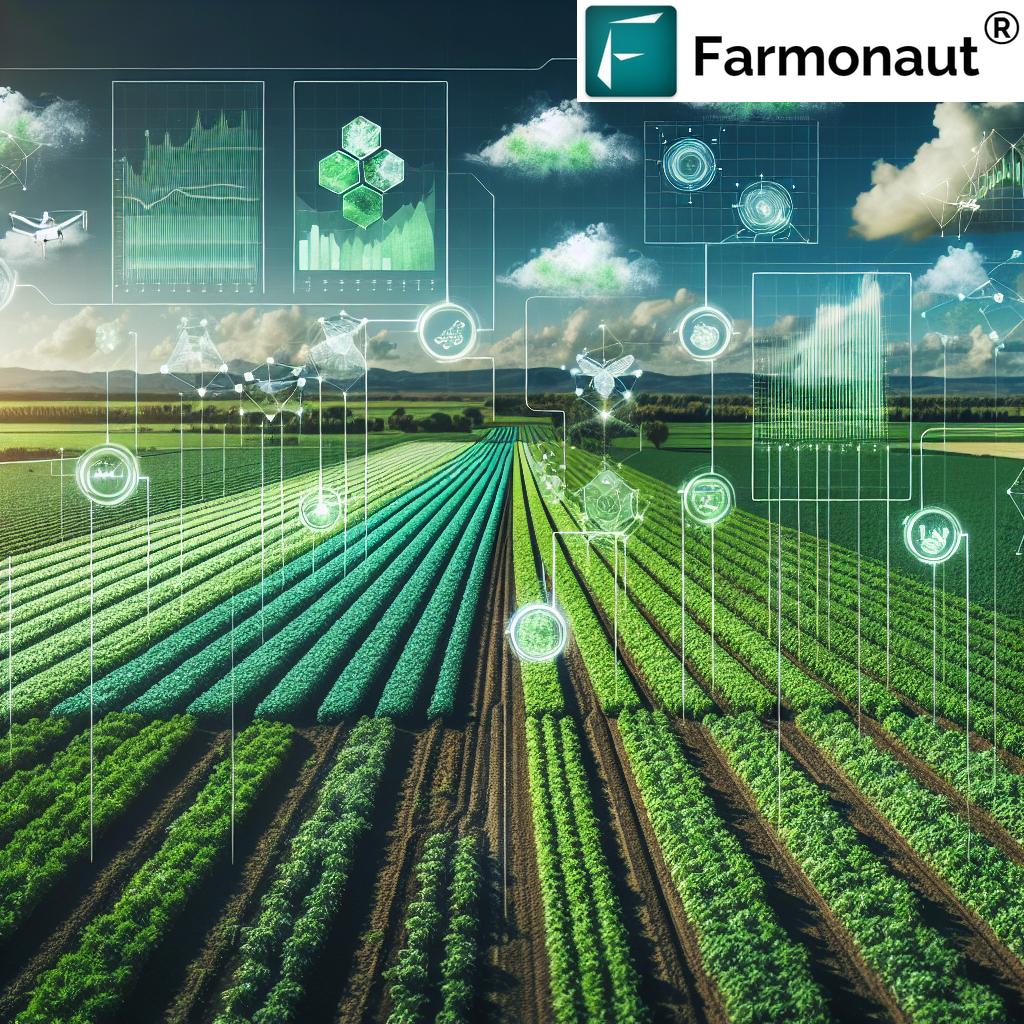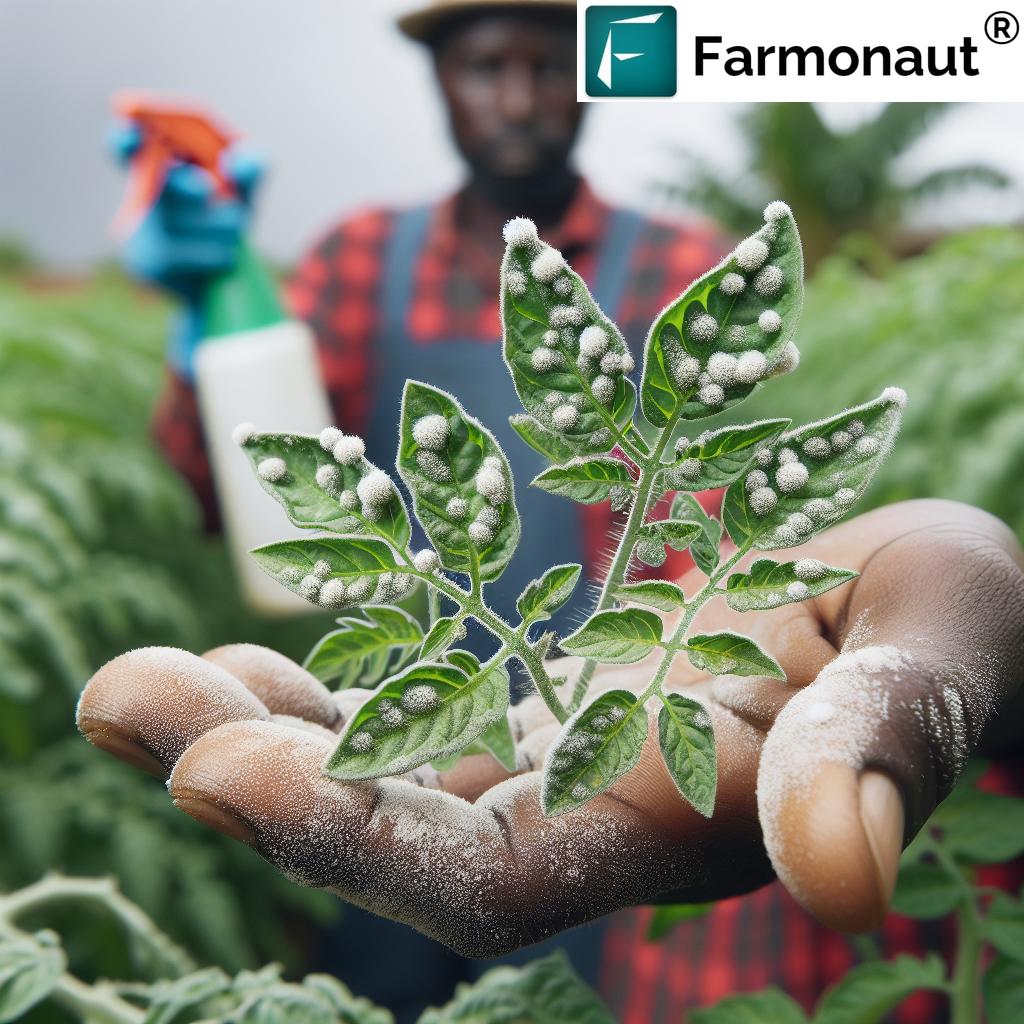Agtech Innovation: 10 Shocking Technologies Changing Farming
Table of Contents
- Introduction: Technology & Innovation in Agriculture
- 1. Precision Agriculture
- 2. Artificial Intelligence and Machine Learning
- 3. IoT Integration in Farming
- 4. Robotics and Automation in Agriculture
- 5. Advanced Crop Genetics
- 6. Blockchain in Agriculture
- 7. Digital Twins
- 8. Vertical and Indoor Farming Solutions
- 9. Renewable Energy Integration in Agriculture
- 10. Sustainable Practices and Climate Adaptation
- Comparison Table of Agtech Innovations and Their Impact
- Farmonaut: Making Precision Agriculture Accessible
- Challenges and Future Outlook of Agtech
- FAQ: Agricultural Technology Innovations
- Conclusion: The Future of Agtech Innovation
“Precision agriculture can increase crop yields by up to 20% using data-driven insights and automated machinery.”
Introduction: Technology & Innovation in Agriculture
As we move further into 2025, agriculture stands at the forefront of a digital transformation, with agricultural technology innovations rapidly changing the way we manage farms, monitor soil health, and secure food supplies. From precision agriculture and IoT devices to AI-driven predictive analytics and sustainability tools, the breadth of agtech advancements has enhanced every aspect of modern farming and forestry.
We are witnessing a seismic shift—one where efficiency, resource optimization, and environmental sustainability go hand in hand. Today’s farmers are equipped with real-time data, advanced sensors, and digital platforms; integrating these technologies has become crucial for meeting the world’s growing food demands.
Join us as we explore the ten most shocking agtech innovations revolutionizing the farming landscape, including how companies like Farmonaut are making precision agriculture accessible for everyone—from smallholder farmers to global agribusinesses.
1. Precision Agriculture: Optimizing Resource Use for Higher Yields
Precision agriculture is at the core of the digital agtech revolution. By leveraging GPS-guided equipment, IoT sensors, satellite imagery, and advanced analytics, this approach allows farmers to monitor and manage field variability with unprecedented accuracy.
- Resource Optimization: Precision agriculture enables the targeted use of water, fertilizers, and pesticides, reducing both waste and input costs while protecting the environment. For instance, by evaluating soil moisture and nutrient levels, automated irrigation systems can deliver the exact requirements to each part of the field.
- Autonomous Machinery: Utilizing tractors and planting machines equipped with advanced sensors, farmers can ensure precision planting, fertilizing, and harvesting. This not only minimizes resource use but maximizes crop yield optimization and efficiency.
One of the most significant breakthroughs is the use of satellite-based crop health monitoring. Platforms like Farmonaut provide multispectral satellite insights on vegetation health (learn more about large-scale farm management), soil moisture, and field variability—enabling farmers to make informed decisions and show measurable improvements in yields.
The environmental impact of traditional agricultural practices is significant—from excess fertilization to water wastage. By embracing precision agriculture, we not only improve efficiency but also move closer to sustainable and resilient farming systems.
Real-World Impact:
According to recent studies, precision agriculture practices can increase crop yields by as much as 20% and reduce resource consumption by 10–15%. This means innovative digital tools are not only essential for profitability but also for advancing sustainability.
2. Artificial Intelligence and Machine Learning in Agriculture
The integration of artificial intelligence in agriculture is redefining how we approach farm management, crop monitoring, and predictive analytics. AI and machine learning algorithms analyze massive datasets—from soil conditions to weather patterns—unlocking actionable insights for farmers.
- Crop Health Diagnostics: AI-powered advisory systems can detect potential disease outbreaks and pest infestations before they seriously impact yields. Satellite data combined with AI, such as the Jeevn AI advisory system from Farmonaut, offers real-time weather forecasts, resource allocation guidance, and expert recommendations tailored to specific farms.
- Yield Forecasting and Trend Analysis: By analyzing market trends and historical datasets, AI helps optimize planting schedules, guides resource use, and supports profitability for both small-scale and industrial farming operations.
These AI tools drive better decision-making, supporting farmers in planning for changing environmental conditions and adapting practices proactively. They help in minimizing loss from unexpected weather events or health issues within crops.
Key Benefits:
By integrating artificial intelligence in agriculture, users can reduce unnecessary fertilizer use by up to 15% and substantially increase operational efficiency—making AI-driven platforms irreplaceable for modern farmers.
“AI-powered tools help farmers reduce fertilizer use by as much as 15%, promoting more sustainable farming practices.”
3. IoT Integration in Farming: Real-Time Monitoring & Smart Resource Management
The Internet of Things (IoT) is now central to agricultural technology innovations. With IoT in farming, farmers deploy sensors and devices—from soil moisture sensors and weather stations to livestock trackers—to gather real-time data across every aspect of their operations.
- Soil & Crop Monitoring: Advanced sensors measure moisture levels, pH, and even crop nutrient content—triggering irrigation when water is low (see Farmonaut’s plantation and advisory tools).
- Livestock & Asset Tracking: IoT solutions monitor animal health, movement, and even reproductive cycles—reducing loss, streamlining farm management, and enhancing profitability.
- Equipment Management: Machine sensors log usage, condition, and location to optimize maintenance schedules and extend equipment life.
The result? Smarter, greener farming methods that combine cost savings with improved resource allocation—driving both efficiency and environmental sustainability.
4. Robotics and Automation in Agriculture: Revolutionizing Labor & Productivity
Among the most transformative agtech innovations, robotics and automation in agriculture are minimizing manual labor and maximizing operational efficiency. Modern robots and autonomous machinery are capable of everything from planting and weeding to harvesting and sorting—at scales ranging from small plots to thousands of hectares.
- Autonomous Tractors & Harvesters: GPS- and AI-guided tractors plow, seed, and fertilize fields without operator intervention, ensuring consistent precision and freeing up human workers.
- Fruit & Vegetable Robots: Smart robotic harvesters gently pick ripe produce while leaving unripe crops to mature, reducing food waste and improving crop yields.
- Labor Shortage Solution: By automating repetitive or labor-intensive tasks, farmers can keep operations running smoothly—even in regions with acute workforce gaps.
Platforms supporting fleet and resource management (explore Farmonaut’s fleet management solution) let farmers monitor machinery usage, optimize fuel costs, and plan maintenance—ensuring more reliable, cost-effective farming operations.
5. Advanced Crop Genetics: Bioengineering Resilient, Nutrient-Rich Crops
The rise of advanced crop genetics is empowering farmers to embrace new-generation crops with exceptional traits. Through biotechnology and CRISPR gene editing, we are witnessing the birth of:
- Disease and Pest Resistance: Crops with built-in resistance need fewer pesticides, reducing environmental impact and lowering input costs.
- Drought and Heat Tolerance: Biotech solutions allow crops to thrive in regions once unsuitable for agriculture, supporting climate adaptation and food security.
- Enhanced Nutritional Value: Engineered grains with higher vitamin, protein, and micronutrient content support improved human health outcomes across populations.
The scalable impact of crop genetics tech is revolutionary—allowing us to feed a growing global population while striving for sustainable farming practices.
Did you know? Persistent monitoring of crop health and early warning systems—such as those offered by Farmonaut’s large-scale farm management tools—allow fast interventions even before disease or pest outbreaks cause losses.
6. Blockchain in Agriculture: Traceability, Food Safety & Supply Chain Trust
One of the most exciting agricultural technology innovations is blockchain in agriculture. This technology ensures that every transaction and process—from planting and harvesting to transportation and sale—is recorded in a secure, immutable ledger accessible to all supply chain stakeholders.
- Traceability: Both producers and consumers can track a product’s journey from farm to table, validating food safety and fair practices.
- Reducing Fraud: Blockchain dramatically cuts the risk of product fraud, substitution, or mislabeling.
- Streamlining Transactions: By digitizing record-keeping, farmers and agribusiness owners benefit from faster, more transparent transactions—leading to improved security and profitability.
Platforms like Farmonaut’s blockchain-based traceability solution let businesses and consumers verify product origin, support transparent supply chains, and meet global regulatory requirements in the food and textile sectors.
7. Digital Twins: Virtual Replicas Transforming Farm Management
A digital twin is a virtual, data-driven replica of a physical system—like a farm or forest. By simulating real-world conditions, digital twins allow us to test various management scenarios (e.g., different irrigation methods or pest control strategies) without disrupting our fields.
- Accelerated Innovation: Digital replicas cut the time and costs of traditional field trials, paving the way for rapid deployment of new technology.
- Informed Decision-Making: Farmers can virtually model changes and predict outcomes before implementing them, thus reducing waste and optimizing inputs.
Such systems are part of the cutting-edge agtech toolkit making farms smarter, more resilient, and ready for tomorrow’s climate and market challenges.
Tip: Integrate digital twin technologies with your systems by using Farmonaut’s satellite and weather API or review the API Developer Docs to accelerate your digital transformation.
8. Vertical and Indoor Farming Solutions: Urban Food Production Redefined
The shift to vertical farming solutions and indoor farming allows us to grow crops in stacked layers, utilizing controlled environments for optimum growth conditions—even in cities or areas with limited arable land.
- Efficient Use of Resources: By tightly controlling light, temperature, humidity, and CO2 levels, these systems maximize yields in minimal space and reduce water usage by up to 90%.
- Sustainable, Pesticide-Free Food: Indoor vertical farms maintain biosecure environments, eliminating the need for chemical pesticides and allowing year-round production.
- Localized Production: Bringing food closer to urban centers reduces transit emissions and increases the freshness of deliverables.
The future of urban agriculture lies in scaling these models—supported by smart monitoring and automation—to make city-based food systems part of the global solution to food security and climate resilience.
9. Renewable Energy Integration in Agriculture: Powering Farms Sustainably
As energy costs and environmental concerns rise, renewable energy in agriculture is more important than ever. By adopting solar panels, wind turbines, and bioenergy systems, farms are cutting fossil fuel reliance and advancing sustainable farming practices.
- Operational Cost Savings: Renewable energy solutions lower utility bills, enabling farmers to reinvest in technology and operations.
- Reduced Carbon Footprint: Clean energy directly reduces greenhouse gas emissions, aligning with broader sustainability and regulatory goals.
- Resilience: On-site energy generation protects against grid fluctuations and price spikes, boosting operational security.
Tools like Farmonaut’s carbon footprint tracking assist agribusinesses in measuring and managing emissions, moving us closer to climate-neutral agricultural systems.
10. Sustainable Practices and Climate Adaptation: Building Resilient Farms
Sustainability is not just a buzzword—it’s a mandate shaping every aspect of agtech innovation. From conserving water to implementing organic inputs and protecting biodiversity, technology-driven methods are crucial for:
- Precision Irrigation: Smart irrigation systems (try Farmonaut’s advanced monitoring) deliver water only where and when it’s needed, dramatically reducing waste.
- Soil Health Monitoring: Digital platforms evaluate parameters from nutrient content to carbon sequestration, guiding input decisions for healthier, more productive soils.
- Agroforestry and Integrated Systems: Combining trees, crops, and livestock in regenerative arrangements builds biodiversity, stabilizes soils, and fights climate change.
The integration of smart analytics and decision support tools enables us to adapt faster, implement sustainable innovation, and enhance both food system resilience and profitability for every farmer.
Comparison Table of Agtech Innovations and Their Impact
| Technology Name | Primary Function | Estimated Adoption Rate (%) | Key Benefit | Estimated Yield Improvement (%) | Example Application |
|---|---|---|---|---|---|
| Precision Agriculture | Field-level resource optimization | 45% | Maximized efficiency, reduced waste | Up to 20% | GPS-guided variable rate seeding |
| AI & Machine Learning | Predictive analytics & farm decision support | 36% | Early detection of issues, reduced input use | 10-15% | AI-based pest outbreak prediction |
| IoT in Farming | Real-time monitoring | 40% | Data-driven interventions | 7-12% | Soil moisture sensors |
| Robotics & Automation | Automated field tasks | 24% | Reduced labor, consistent quality | 8-14% | Autonomous tractors |
| Advanced Crop Genetics | Disease/pest and environmental resistance | 29% | Higher resilience & nutrition | 15-25% | CRISPR-edited crops |
| Blockchain in Agriculture | Traceability & transparency | 12% | Supply chain trust | 7-10% | Product traceability platforms |
| Digital Twins | Virtual modeling & risk-free testing | 10% | Faster innovation cycles | ~7% | Simulated irrigation strategies |
| Vertical/Indoor Farming | Urban & controlled environment production | 6% | Space/water saving, year-round yield | Up to 30% | LED-lit hydroponic farms |
| Renewable Energy Integration | Sustainable power generation | 18% | Lowered carbon footprint, cost savings | Indirect: ~6% | Solar irrigation pumps |
| Sustainable Practices & Climate Adaptation | Resource conservation, resilience | 33% | Improved adaptation/biodiversity | Varies by method | Precision irrigation, agroforestry |
Farmonaut: Making Precision Agriculture Accessible Globally
In the age of data-driven agriculture, Farmonaut stands out as a pioneering agricultural technology company dedicated to democratising precision agriculture worldwide. Our mission is to break cost barriers and make advanced farm management tools available to every farmer, from small plots to sprawling industrial estates.
Farmonaut’s Cutting-Edge Technologies
- Satellite-Based Crop Health Monitoring: Using multispectral satellite imagery, we provide real-time crop health and soil moisture analysis. This helps you optimize irrigation, fertilization, and resource allocation, minimizing waste while boosting crop yields.
- Jeevn AI Advisory System: Our AI-driven personal farm assistant provides instant, actionable insights—including weather predictions and customized crop management strategies. This system leverages machine learning on satellite data to help farmers make evidence-based decisions.
- Blockchain-Based Traceability: Farmonaut’s blockchain traceability ensures complete transparency from farm to consumer, securing supply chains against fraud and building trust.
- Fleet and Resource Management Tools: Optimize your equipment usage, fleet movement, and agro-logistics via Farmonaut’s dedicated solution, reducing operational costs and boosting efficiency.
- Carbon Footprinting: Track and reduce your carbon emissions for compliance and climate impact using Farmonaut’s real-time carbon footprinting tools.
Whether you’re an individual farmer looking to maximize local profits, an agribusiness managing plantations, or a corporate entity securing supply chain authenticity, Farmonaut offers scalable, affordable, and user-friendly tools for everyone.
Available Across All Devices: Access our platform through web and browser app, Android app, or iOS app—experience real-time monitoring and actionable insights wherever you go!
Developers & Integrators: Expand your application’s capabilities with Farmonaut’s robust Satellite and Weather API and explore documentation here.
Challenges and Future Outlook: Maximizing Agtech Impact
While agricultural technology innovations are accelerating progress across farming and forestry, we must address practical challenges and ensure that their adoption benefits all stakeholders:
- High Initial Costs: For many small and medium-sized farms, upfront expenses for advanced tech like robotic systems, satellites, or digital twins remain a significant barrier.
- ROI and Adoption: Demonstrating a clear return on investment is essential. Technologies must be accessible, affordable, and easy to integrate across varying landscapes—from advanced agribusiness to smallholder plots.
- Data Security & Privacy: As data collection increases, so do risks regarding privacy and cybersecurity. Platforms must ensure robust protections for sensitive agricultural data.
Going forward, the focus will be on scaling solutions, lowering cost barriers, and making advanced sustainable farming practices as simple as possible—and as powerful as needed—for every user.
FAQ: Agricultural Technology Innovations
What is agtech?
Agtech (agricultural technology) encompasses the use of advanced tools, data analytics, IoT, AI, and digital platforms to enhance the efficiency, sustainability, and profitability of agricultural, farming, and forestry operations.
How does precision agriculture improve crop yields?
Precision agriculture uses GPS, IoT sensors, and machine learning to provide site-specific data so that farmers can allocate resources exactly where and when they’re needed—maximizing yield while minimizing waste.
What are the benefits of blockchain in agriculture?
Blockchain increases transparency, traceability, and security in the supply chain—helping both producers and consumers verify product origin, prevent fraud, and build trust.
How do digital twins work in agriculture?
Digital twins replicate farm or forest systems virtually, enabling scenario testing and predictive analytics for optimal management without risking real-world crops.
How can smallholder farmers access these technologies?
Platforms like Farmonaut offer affordable subscription models and app-based access, democratizing advanced agtech for small and medium-sized farms globally.
How is sustainable farming practiced with agtech?
Through precision agriculture, real-time monitoring, eco-friendly genetic engineering, controlled environment agriculture, and renewable energy integration, agtech enables farmers to conserve resources, reduce emissions, and improve resilience.
Conclusion: The Future of Agtech Innovation
We are at a pivotal point in agricultural history. Never before have farmers and agribusinesses had such powerful tools for improving efficiency, reducing costs, and driving sustainability. With ongoing advancements in precision agriculture, IoT in farming, artificial intelligence, robotics, and more, the agricultural sector is not just adapting to global challenges—it is overcoming them.
At Farmonaut, we are committed to making these transformative innovations available to all, regardless of scale or geography. Advanced crop health monitoring, AI-based advisory, blockchain traceability, resource management, and carbon tracking are just some of the ways we are shaping a more productive, resilient, and sustainable farming future worldwide.
Explore the power of modern agtech. Make smarter decisions. Improve yields. Contribute to a sustainable global food system.
Ready to transform your farm? Download the Farmonaut App or access our Satellite Weather API today.
Let’s build the future of agriculture, together.


